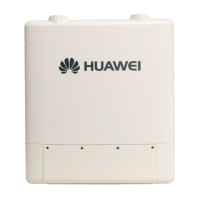LTE TDD B2268H
User Guide
Copyright © Huawei Technologies Co., Ltd.
Authorization Requirements
SIP registrations (and subsequent SIP requests) require a username and password for
authorization. These credentials are validated via a challenge / response system using the HTTP
digest mechanism (as detailed in RFC3261, "SIP: Session Initiation Protocol").
SIP Servers
SIP is a client-server protocol. A SIP client is an application program or device that sends SIP
requests. A SIP server responds to the SIP requests.
When you use SIP to make a VoIP call, it originates at a client and terminates at a server. A SIP
client could be a computer or a SIP phone. One device can act as both a SIP client and a SIP
server.
SIP User Agent
A SIP user agent can make and receive VoIP telephone calls. This means that SIP can be used
for peer-to-peer communications even though it is a client-server protocol. In the following
figure, either A or B can act as a SIP user agent client to initiate a call. A and B can also both act
as a SIP user agent to receive the call.
Figure 13-6 SIP User Agent
SIP Proxy Server
A SIP proxy server receives requests from clients and forwards them to another server.
In the following example, you want to use client device A to call someone who is using client
device C.
Step 1 The client device (A in the figure) sends a call invitation to the SIP proxy server B.
Step 2 The SIP proxy server forwards the call invitation to C.

